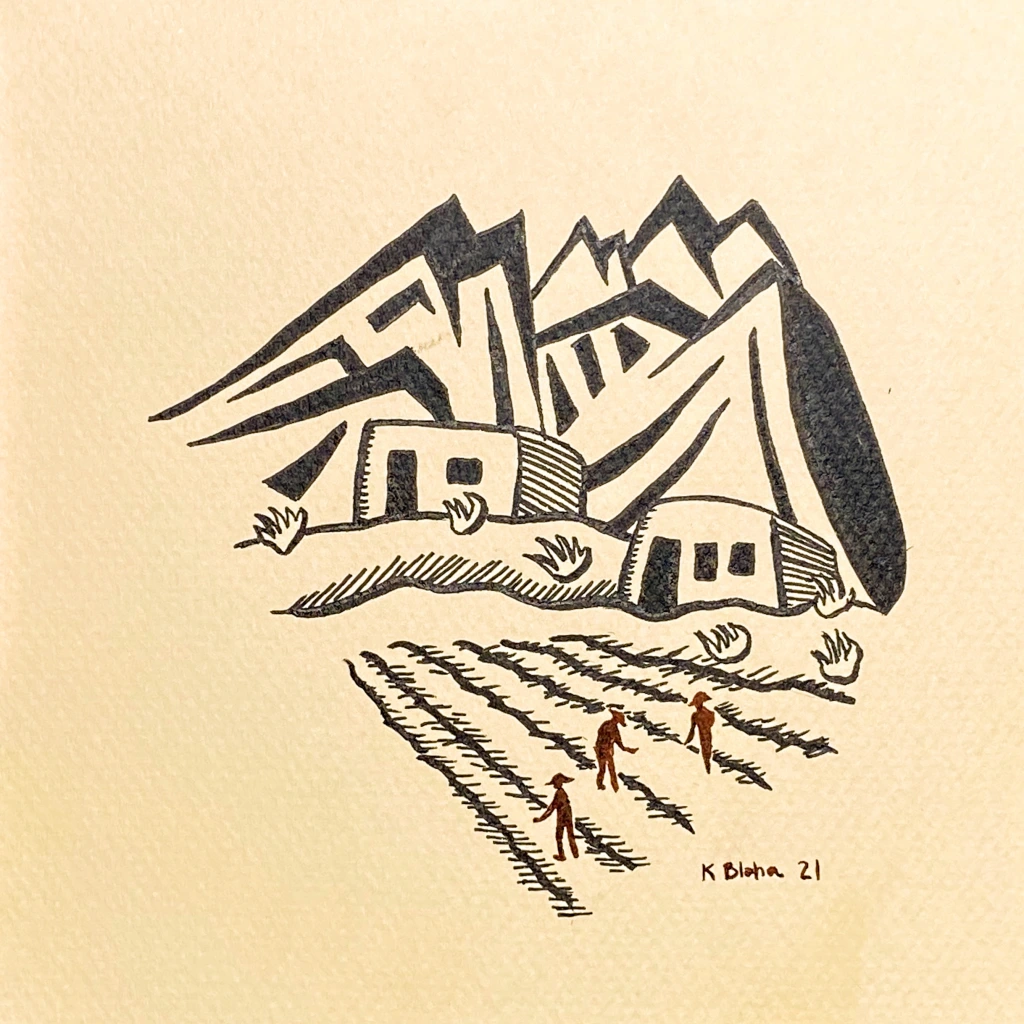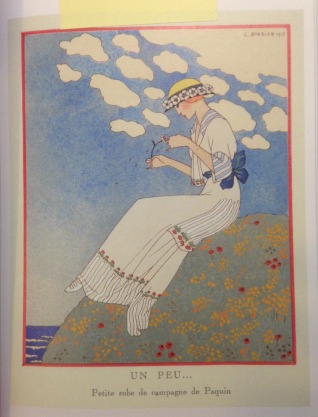I’ve made it through the first 5 days of my 15 day drawing–or as someone pointed out, a drawing development sprint. So far, so good, and using a lot of reference books to help fuel the creative flames.
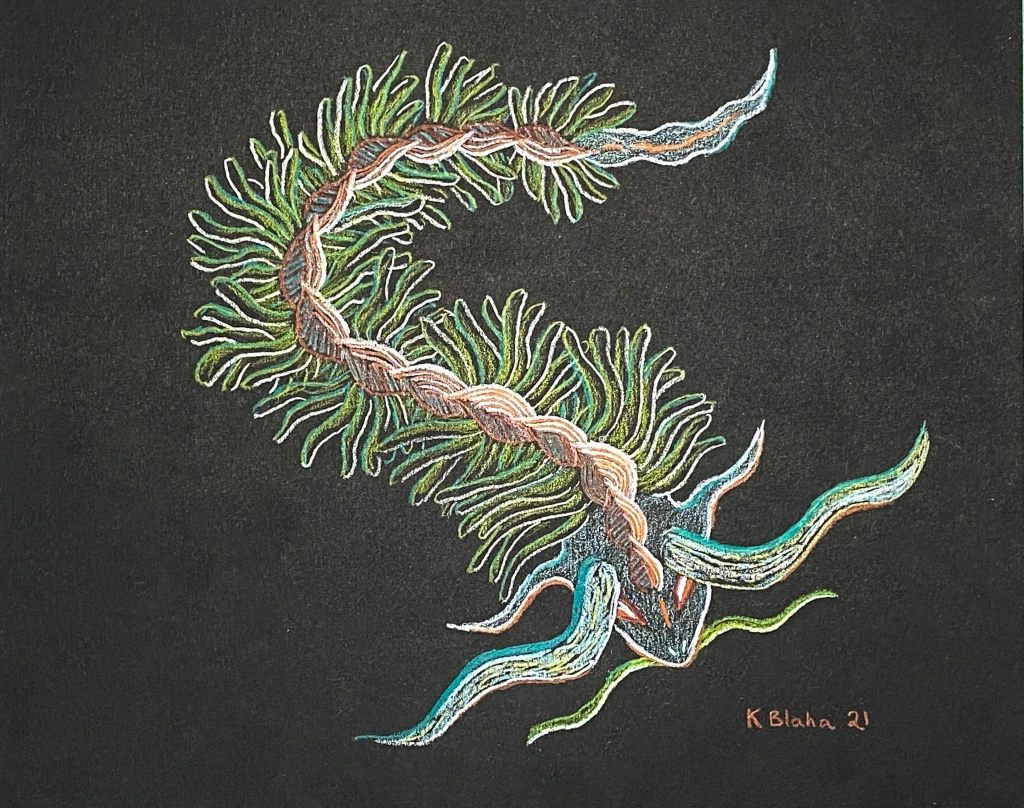
Day 1: Monster
Depicting the “World Wyrm”, a mythological monster with significance to Digurtians and humans and represented in several ways at various points of time and in various subcultures.
Materials
Prismacolor color pencils on black Canson Mi Teintes paper.
Reference Books
- The Night Life of Trees
- A Journey in the Phantasmagorical Garden of Apparitio Albinus
- Ernst Haeckel Art Forms in Nature
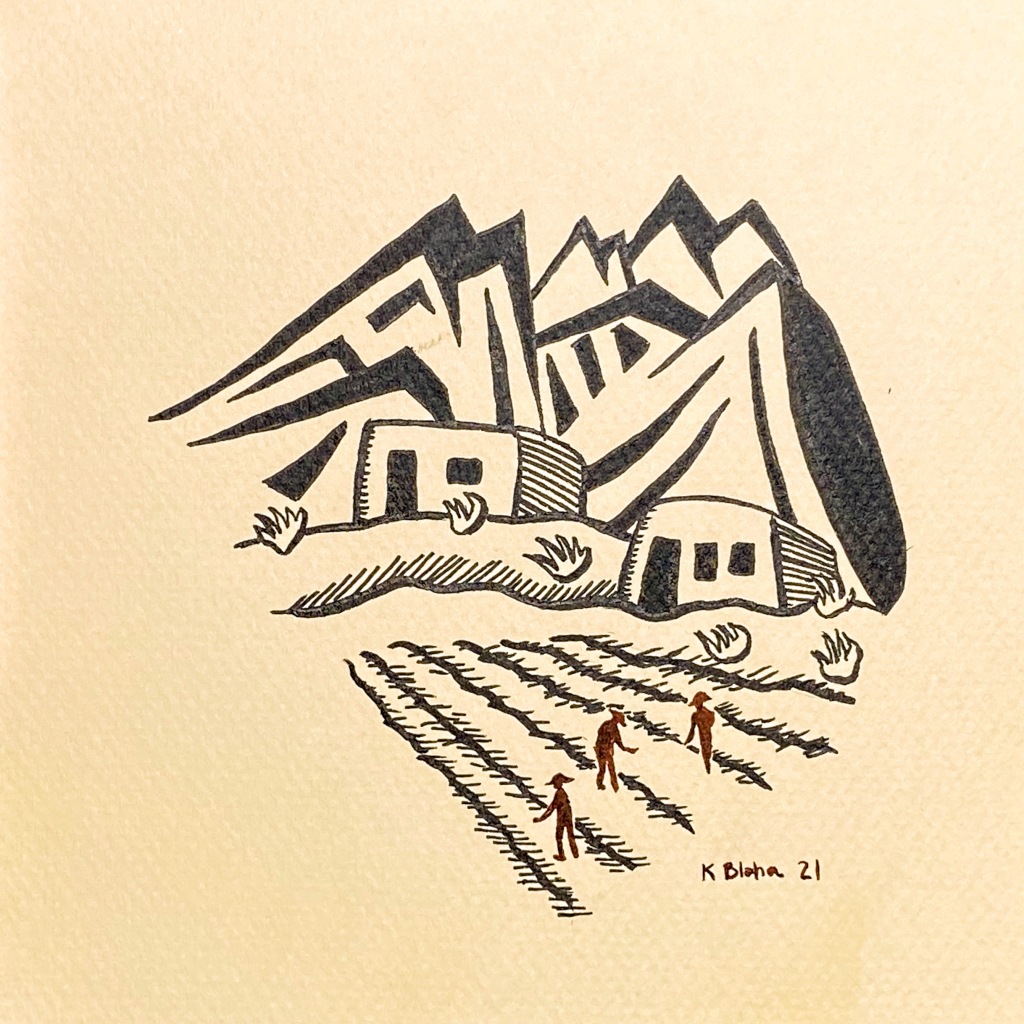
Day 2: First Founding
Trying not to belabor building materials here—trying to capture how First Founding might have been remembered by later Vironevaehns as a fleeting idyllic time between crises, a time when the community came together. Referencing an old drawing of the Vironevaehn mountains.
Materials
Faber-Castell Pitt Artist Pens on colored Canson Mi Teintes paper.
Reference Books
- The Carved Line: Block Printmaking in New Mexico (especially the work of Willard Clark)
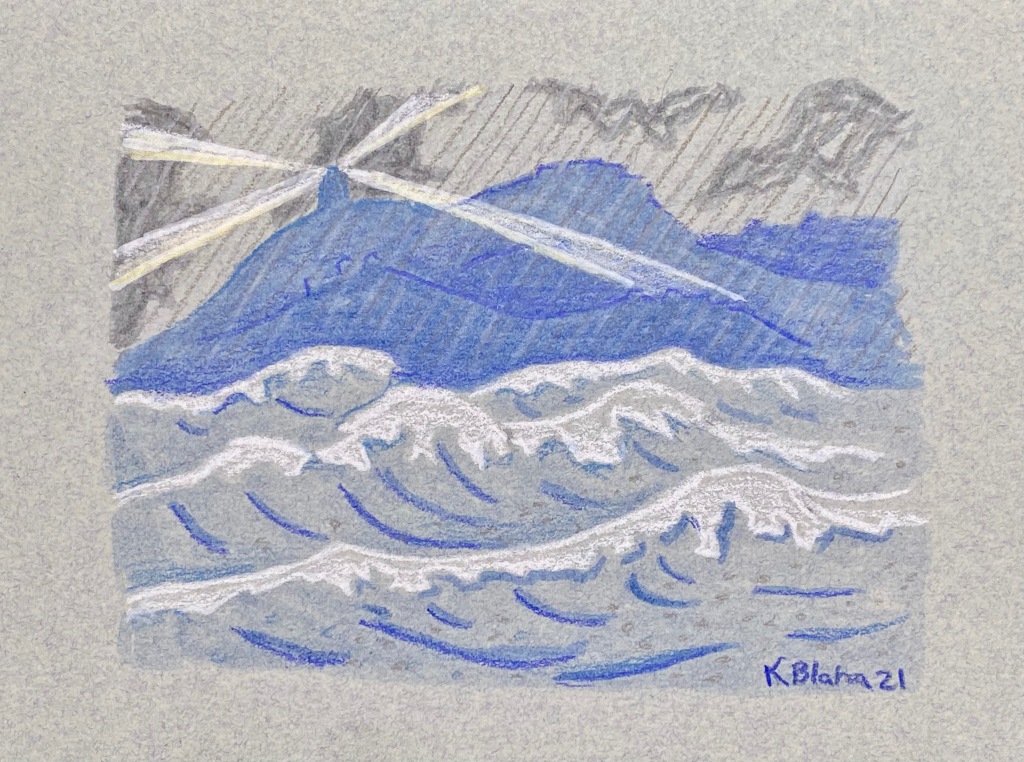
Day 3: Flow
Looking toward the city and a storm tower during a storm.
Materials
Faber-Castell Pitt Artist Pens and Prismacolor color pencils on Canson Mi Teintes paper.
Reference Books
- California’s Wild Edge
- Oscar Dröge: Landschaft Witz und Reiselust
- The Complete Graphics of Eyvind Earle
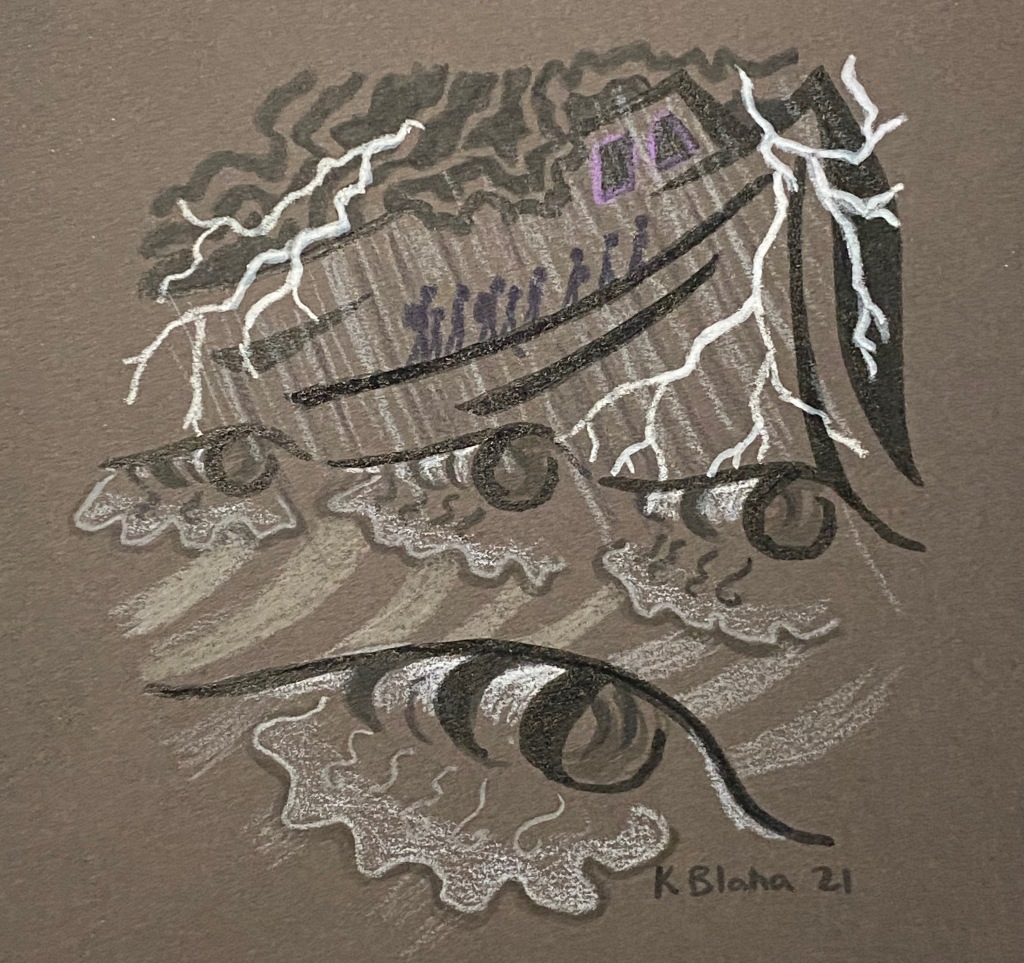
Day 4: Going to Mt. Vit
Showing the flight to the mountains after the start of the Great Rains. I wanted to show it in a storybook style, the people leaving one life forever and going to something new and a bit ominous, but nonnegotiable.
I want to re-do this one after the sprint. I want to preserve the silhouette of the mountains that is broken by the clouds in this version. Before I added the rain, it wasn’t too bad, but the rain and the clouds make the image too muddy. I think I’ll take the lightning out too. Maybe try the people in a light color too. This should be fun to redo.
Materials
Faber-Castell Pitt Artist Pens and Prismacolor color pencils on Canson Mi Teintes paper.
Reference Books
- California’s Wild Edge
- The Horn Island Logs of Walter Inglis Anderson
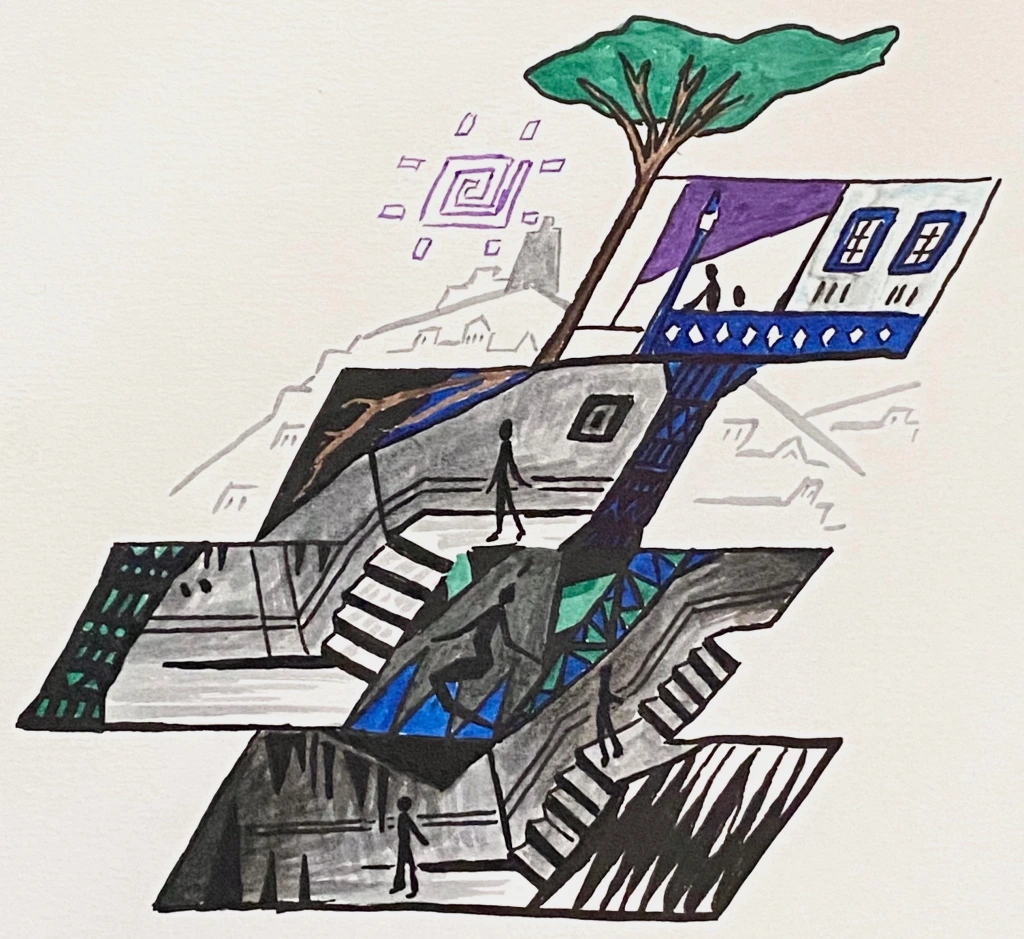
Day 5: Balance
I’ve been really obsessed with the idea of Vironevaehn identity and how it spans two humanoid cultures and their intersection. The city they build together spans above and below, and spans night and day. As night and day balance in a rhythm that defines our hormonal and cellular processes, human and Digurtian form an emergent people and culture.
Materials
Faber-Castell Pitt Artist Pens on Canson Mi Teintes paper.
Reference Materials
The city of Derinkuyu.
Reference Books
- Sanna Annukka illustrated “Snow Queen”
- Visions Underground: Carlsbad Caverns Through the Artist’s Eye

